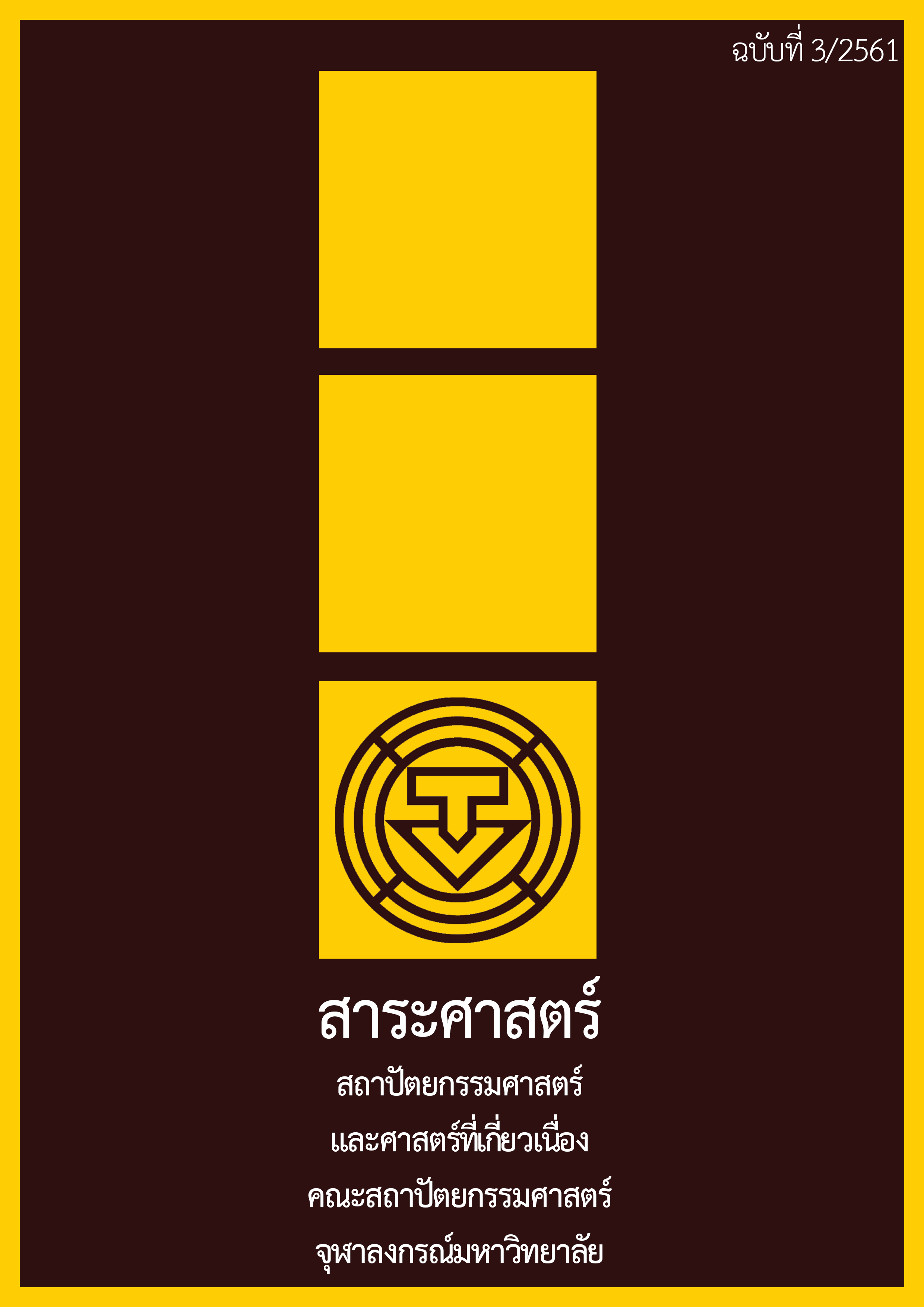The Improvement of Physically in Common Areas and Management of Condominium Projects with “Vibrant Community for All Ages Strategy” : Case Studies of Lumpini
Main Article Content
Abstract
Nowadays, people tend to pay interest in acquiring condominium as their residence that is able to support new family member, to have social status, and to have caring neighbors. The type of residence provides facility to all aged members. At the same time, LPN Development PCL is a quality condominium development company for all ages. The research purposed to study the improvement of common areas and life quality management including analyzing the result from the operation, using the primary data which is documentation relating design for all ages and life quality management. The secondary data include observation, interview, and questionnaire distribution.
According to the result, the physical improvement of common areas has the same goals of improvement which are for convenience of residents and to adjust the slope in every project. In terms of life quality management, it shares the same goal of improvement which means everyone, fire evacuation training, and New-Year party activity to be appropriate for the residents of all aged. Regarding the physical improvement result of using the common areas, it was found that the highest mean of satisfaction score is the slope and lift. In terms of life quality management, the highest mean of satisfaction score is safety activities. The case study with the highest satisfaction score in physical improvement of common areas and management is the case study 4 due to the fact that the common areas have been designed and improved to be up-to-date and suitable for people of every age while the life quality management has been improved to be appropriate for the social condition of all aged. all age living.
Article Details
References
ต่อทอง ทองหล่อ. “ความสนใจล่าสุดการพักอาศัยในเมืองกรุง.” สืบค้น 1 ตุลาคม 2560. https:// www.propholic.com.
ไตรรัตน์ จารุทัศน์. คู่มือการออกแบบเพื่อทุกคน. กรุงเทพมหานคร: หน่วยปฏิบัติการวิจัยสภาพแวดล้อมที่เหมาะสมกับผู้สูงอายุและคนพิการ คณะสถาปัตยกรรมศาสตร์ จุฬาลงกรณ์มหาวิทยาลัย, 2558.
บริษัท แอล.พี.เอ็น.ดิเวลลอปเมนท์ จำกัด (มหาชน). รายงานการพัฒนาอย่างยั่งยืนประจำปี 2559. กรุงเทพมหานคร:
บริษัท แอล.พี.เอ็น.ดิเวลลอปเมนท์ จำกัด (มหาชน), 2559.
ภูเบศร์ สมุทรจักร, ธีรนุช ก้อนแก้วและริฎวิน อุเด็น. ความอยู่ดีมีสุขของครอบครัวไทย. กรุงเทพมหานคร: สถาบันวิจัยประชากรและสังคม มหาวิทยาลัยมหิดล, 2559.
สมาคมสถาปนิกสยาม ในพระบรมราชูปถัมภ์. ข้อแนะนำการออกแบบสิ่งอำนวยความสะดวกสำหรับทุกคน.กรุงเทพมหานคร: สมาคมสถาปนิกสยาม ในพระบรมราชูปถัมภ์, 2557.
สัญญา สัญญาวิวัฒน์. ทฤษฎีสังคมวิทยา. กรุงเทพมหานคร: คณะรัฐศาสตร์ จุฬาลงกรณ์มหาวิทยาลัย, 2534.
สำนักงานคณะกรรมการพัฒนาการเศรษฐกิจและสังคมแห่งชาติ. แผนพัฒนาเศรษฐกิจและสังคมแห่งชาติ ฉบับที่ 12 พ.ศ.2560-2564. กรุงเทพมหานคร: สำนักนายกรัฐมนตรี, 2560.
Hong Kong Housing Society. Universal Design Guidebook For Residential Development In Hong Kong. Hong Kong: Hong Kong Housing Society, 2005.
Rensis A. Likert. New Patterns of Management. New York: McGraw-Hill, 1961.
Maynard W.Shelly. Responding to Social Chang. Dowder: Hutchison Press, 1975.
The National Disability Authority (NDA). Building for Everyone: A Universal Design Approach. Dublin: Centre
for Excellence in Universal Design, 2007.
National University of Singapore. This Guidebook is Produced with the Assistance of the Department of
Architecture. Singapore: School of Design & Environment, 2006.
Yamane Taro. Statistics: An Introductory Analysis. New York: Harper and Row, 1967.


